By LaMonica Peters
Supporters of Congresswoman Karen Bass convened on Sunday, January 30, 2011 at the Robert F. Kennedy Community Schools in Los Angeles to witness her swearing-in as the U.S. Representative for the 33rd District. On hand to recognize Bass’ achievements were Los Angeles Mayor Antonio Villaraigosa, former Congresswoman Diane Watson, who retired from the 33rd District seat, and Democratic Minority Leader Nancy Pelosi.
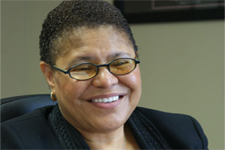
Though Bass was officially sworn-in in Washington D.C. with other newly elected Representatives, Pelosi spoke of the importance of the community being able to take part in such a ceremony. Congresswoman Bass has a long history of service among Los Angeles residents. She is the founder of the Community Coalition, a 21 year old social justice organization that has lead the fight for major policy changes that benefit the South L.A. community.
Congresswoman Bass will sit on the Budget and Foreign Affairs Committee as well as the Steering and Policy Committee which directs policy for the Democratic Caucus. She has also been chosen to be the Democratic Assistant Whip.
To contact Congresswoman Karen Bass, go to karenbass.house.gov or call 323-965-1422.










 By M.A. Currie
By M.A. Currie Webb’s testimony was part of the continuing trial of Arlon Watson, a 22-year-old Compton resident charged with the 2009 shooting death of Dannie Farber, Jr., a Narbonne High School senior and star football player.
Webb’s testimony was part of the continuing trial of Arlon Watson, a 22-year-old Compton resident charged with the 2009 shooting death of Dannie Farber, Jr., a Narbonne High School senior and star football player. 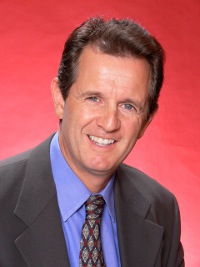 By David Lyell (left), L.A. Unified Teacher
By David Lyell (left), L.A. Unified Teacher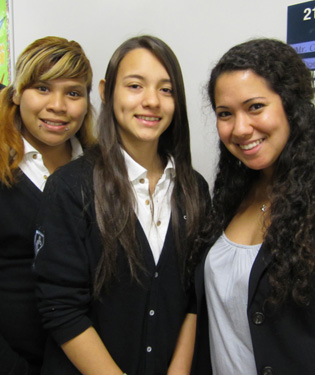 At 22 years old and standing just over five feet, Avery Seretan is sometimes mistaken for a student. She’s actually a ninth-grade special education teacher in Watts. And depending on the day, she’s also a mother, confidant, guardian and referee for her students.
At 22 years old and standing just over five feet, Avery Seretan is sometimes mistaken for a student. She’s actually a ninth-grade special education teacher in Watts. And depending on the day, she’s also a mother, confidant, guardian and referee for her students. 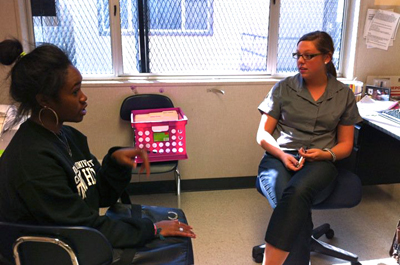 Classroom T-12 at Lou Dantzler Preparatory High School in Los Angeles is hidden within an urban maze of chain link fences, Port-o-Potties and portable classroom sheds called bungalows. But inside the makeshift-learning hub, a focused group of 12th grade English students works diligently on their research paper rough drafts, as the inspirational Michael Jackson song “Man in the Mirror” fills the room.
Classroom T-12 at Lou Dantzler Preparatory High School in Los Angeles is hidden within an urban maze of chain link fences, Port-o-Potties and portable classroom sheds called bungalows. But inside the makeshift-learning hub, a focused group of 12th grade English students works diligently on their research paper rough drafts, as the inspirational Michael Jackson song “Man in the Mirror” fills the room.  “Right now, they see it as a demoralizing test that costs them money, and that they will get nothing out of,” said Miller. “That is the problem, this lack of confidence in what they can become and what they can achieve, and that is a battle I fight every day.”
“Right now, they see it as a demoralizing test that costs them money, and that they will get nothing out of,” said Miller. “That is the problem, this lack of confidence in what they can become and what they can achieve, and that is a battle I fight every day.”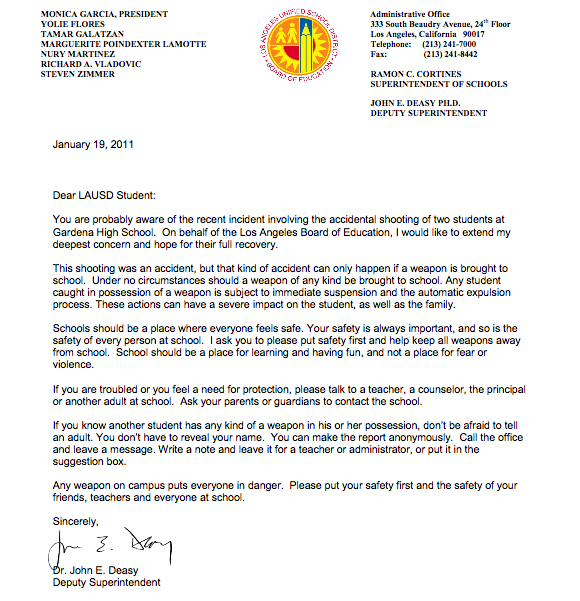
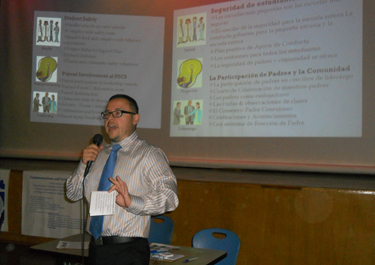
 An estimated 1,000 volunteers gathered at Thomas A. Edison Middle School to celebrate Martin Luther King Jr. Day by participating in City Year Los Angeles’ day of service.
An estimated 1,000 volunteers gathered at Thomas A. Edison Middle School to celebrate Martin Luther King Jr. Day by participating in City Year Los Angeles’ day of service.  The bigger message is that of “community.” Building, creating, and connecting a community, a message that Dr. Martin Luther King Jr. also preached.
The bigger message is that of “community.” Building, creating, and connecting a community, a message that Dr. Martin Luther King Jr. also preached.




